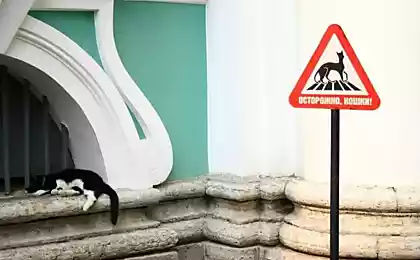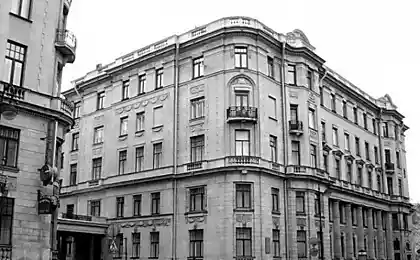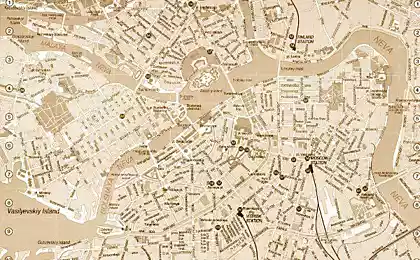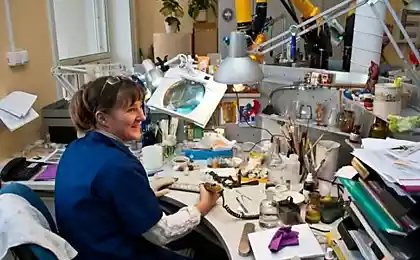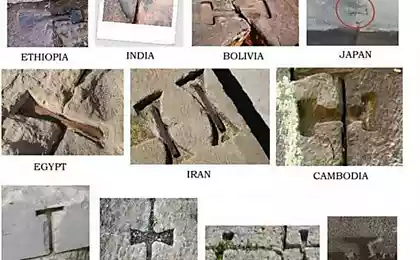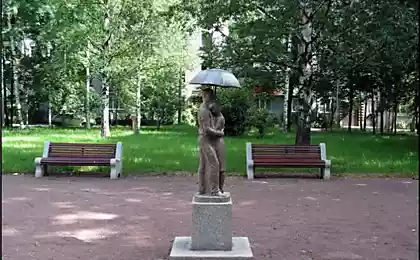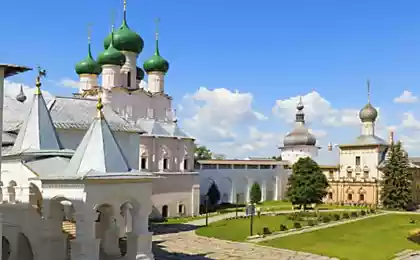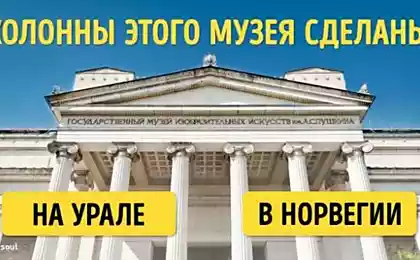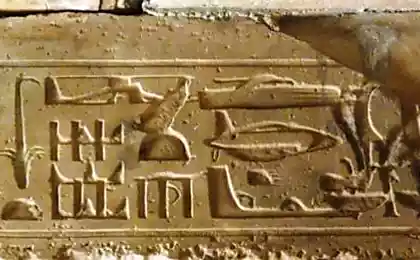1307
7 unsolved mysteries of the Hermitage
93 years ago opened all the rooms of the Hermitage. What is not a reason to visit the famous museum? With the city more than three million exhibits require a minimum of eight years. We offer a tour of the sighting-acquainted with the principal mysteries of the Hermitage.
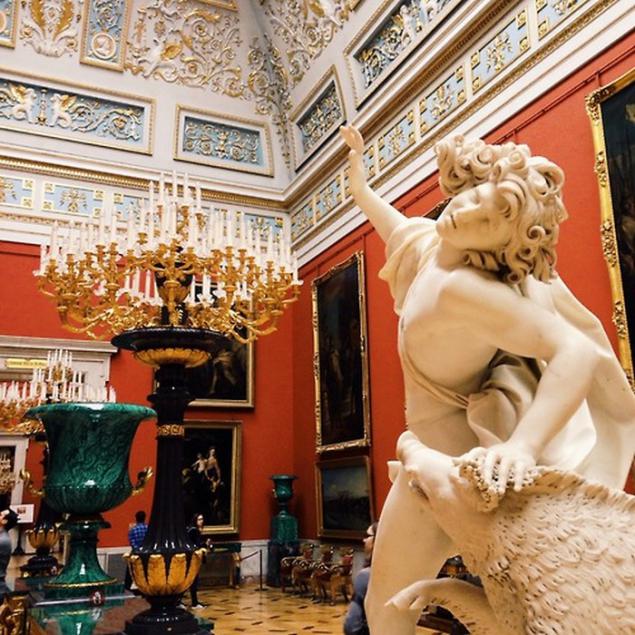
1. WHAT "Peacock»?
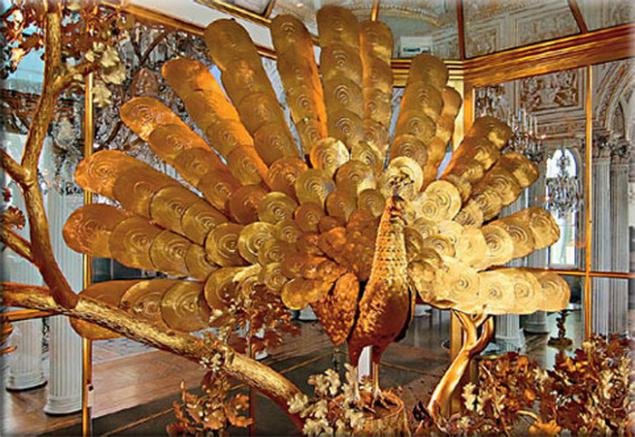
In 1777, Prince Grigory Potemkin decided to once again surprise the Empress Catherine. His choice fell on the work of the English mechanic James Cox. Why it is not known. Perhaps the Russian Count saw amazing things in the promotional catalogs, which published the master. However, it is unclear whether Cox personally executed orders for Russian prince or helped him Friedrich Urey. A gift had to disassemble - otherwise it was simply not deliver to Russia. Disassemble something apart, but were unable to collect - some details turned out either broken, or lost. And pylilsya be a spectacular gift, if in 1791 Potemkin not instructed to "revive the birds' Ivan Kulibin. And the master of the highest class has done the impossible: the clock went, and intricate mechanism was set in motion. Once the clock starts to ring, "comes to life" owl in a cage.
The ringing of bells cell begins to rotate. Then "wakes up" the peacock: its tail rises, starts to blossom, bird bows, draws and throws his head back, opens its beak. At that moment, when the tail is fully revealed, the peacock is rotated 180 degrees so that the audience sees it ... ass. Then go down feathers and peacock takes its original position.
Learn about the true reason of such conduct impartial peacock is impossible today. According to one version Kulibin failed to ensure that the birds make a full turn. Another legend claims that the master deliberately made the bird to make such "fuete", thus demonstrating their attitude to the royal court, for which the "bird" and was intended.
2. THE TOMB OF HOMER
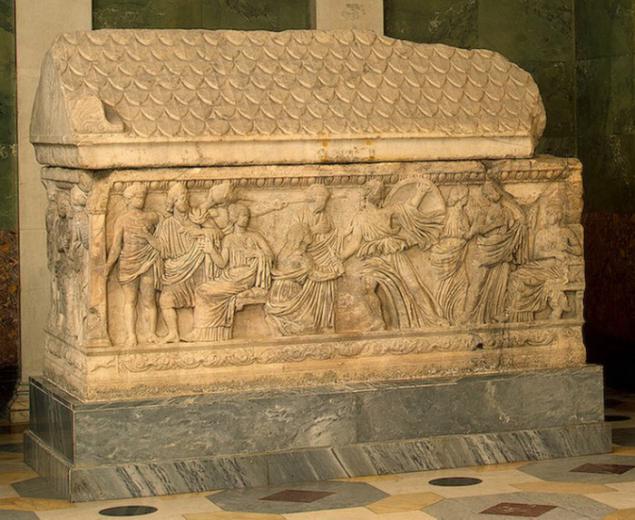
The hall can be found Jupiter and another enigma Hermitage - "Tomb of Homer." She was taken either from the island of Andros, or from the island of Chios during the First Archipelago expedition of Count Orlov-Chesmensky. The first owner of the tomb was "zavoditel Affairs extraordinary" Count Alexander Stroganov, who wrote: "The first Turkish war of 1770 a Russian officer domestic, commander of our landing on one of the islands, brought the sarcophagus in Russia and gave it to me. At the sight of this monument, I could not help but exclaim: "Is it not a monument to Homer?" The phrase began to pass from mouth to mouth, but seems to have no interrogative intonation.
Soon, the authority Stroganov as a collector has grown enormously. Still, after he had the subject, followed by more than one century chasing adventurers from around the world. However, the "Tomb of Homer" - another beautiful legend, like Atlantis or the gold of Troy.
After studying the bas-reliefs, scientists say with confidence that the ancient tomb was created in the II century AD, and it means that the person who owned the sarcophagus, missed with a homer for nine years. But it remains an unsolved mystery of another tomb: a completely different style of the back and front walls of the sarcophagus. How, where and when these walls connected - is unclear.
3. bloodthirsty Goddess
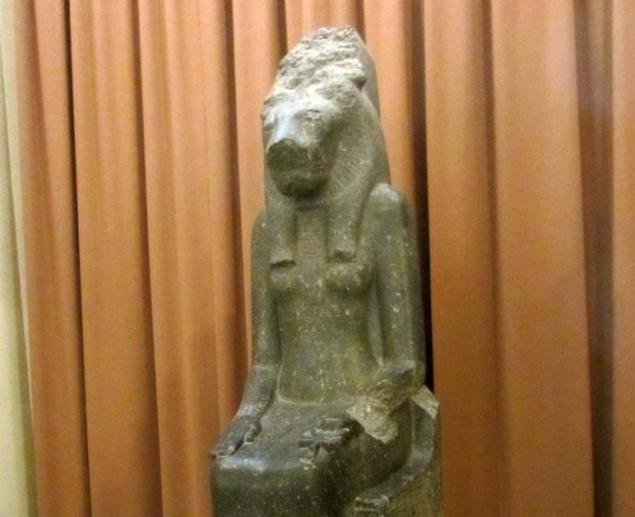
In the Egyptian room you can find one of the most ancient Egyptian monuments on the territory of Russia - the statue of the goddess of war and retribution, angry Mut-Sekhmet.
According to the myth, bloodthirsty goddess decided to destroy the human race. The gods decided to save people they poured before the goddess dyed red beer that Mut-Sekhmet adopted for human blood. Drank - and calmed down.
However, the legend of the Hermitage insists that the risk to humans is still present. Allegedly, each year during the full moon on the lap of the goddess appears reddish puddle.
According to another version - the goddess legs covered strange reddish patina humid whenever Russia look forward to further trouble, trouble, disaster. Last time raid, ostensibly, was discovered in 1991. Is there a legend at least a grain of truth? And how can you explain the strange "bloody" raid? Answers to these questions have not been found.
4. THE MYSTERY OF THE GOLDEN MASK
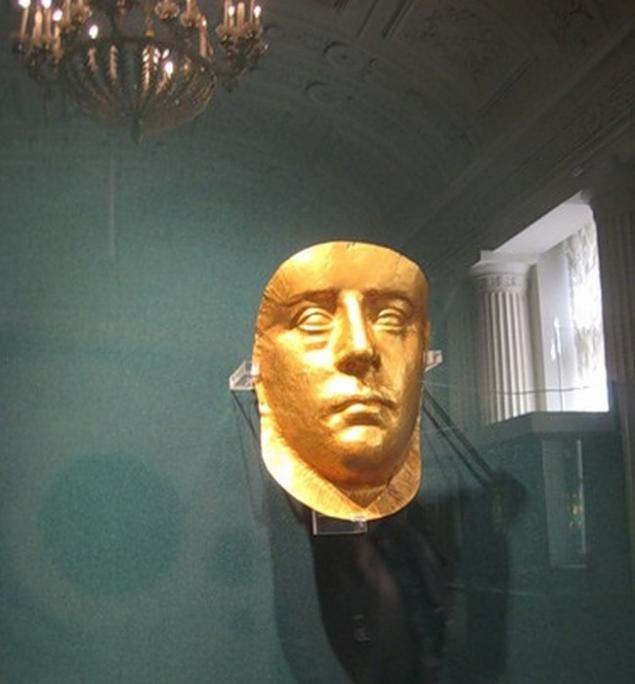
The Hermitage is stored only three posthumous ancient masks of gold. One of them - a mask from the tomb Reskuporida. In 1837, archaeologists discovered near Kerch mound found inside a stone sarcophagus with a female skeleton, which allegedly belonged to none other than the queen, the whole body is studded with plaques of gold on his head - a golden crown, face hidden golden mask. Around the sarcophagus was found a large number of valuable items, including a silver plate embossed with the name of King Reskuporida, the ruler of the kingdom of the Bosporus.
Scientists have suggested that in the sarcophagus was buried his wife, but later began to doubt. Until now, the hypothesis that the golden mask hiding his face Bosporan queen has not been confirmed nor disproved.
5. bows PETER
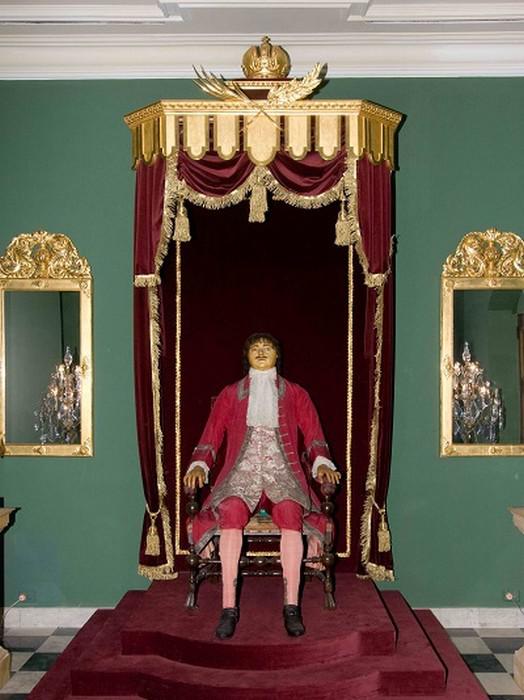
An aura of mystery surrounded the so-called "wax figure" of Peter, on which bother domestic and European masters after the death of the emperor. Many visitors have argued that with my own eyes have seen the wax Peter stood up, bowed, and then pointed to the door, apparently alluding to the fact that the guests' time and the privilege to know ».
In the XX century during the restoration in the figure were discovered hinges that allow to put in a chair and put the figure of Peter. However, no mechanism that would allow the king to move independently, was found. Someone evidence unconvincing, someone - did not want to lose another beautiful legend. Whatever it was, but today there is a lot of those who argue that with "familiar caretaker" was in a room at the very moment when the figure "came to life».
6. originality EARRINGS
In the Siberian collection of Peter I can find Feodosiyskaya earrings made in ancient technique of grain. Their main decoration is a microscopic multi-figure composition, illustrating the Athenian race. The smallest grains, which is dotted with one part of the decorations can be seen only with a magnifying glass. At high magnification revealed tiny grains that are linked to and arranged in four rows - this is the finish and gave Theodosia earrings worldwide fame. The world's best jewelers tried to create a copy of Theodosia jewelry, but the task proved impossible. No soldering method or solder composition, which was used by ancient masters, could not figure out.
7. "godless TIME ICON»
One of the most controversial masterpieces - "Black Square" by Malevich 1932 - can also be found in the Hermitage. The author treated the idea as boundlessness, summarized in a single sign, calling "Black Square" icon of the new, godless time. Disputes about the ideological content of the web being a long time, but since then, as the painting was exhibited at the Hermitage, again and again draws attention to its "destructive" energy: some visitors beside her fainted, while others are coming in frantic excitement. < br />
Is the world a masterpiece endowed with mystical powers, or is it another attempt to "add fuel to the fire"? These questions are easy to answer, one has only to visit the Hermitage.

1. WHAT "Peacock»?

In 1777, Prince Grigory Potemkin decided to once again surprise the Empress Catherine. His choice fell on the work of the English mechanic James Cox. Why it is not known. Perhaps the Russian Count saw amazing things in the promotional catalogs, which published the master. However, it is unclear whether Cox personally executed orders for Russian prince or helped him Friedrich Urey. A gift had to disassemble - otherwise it was simply not deliver to Russia. Disassemble something apart, but were unable to collect - some details turned out either broken, or lost. And pylilsya be a spectacular gift, if in 1791 Potemkin not instructed to "revive the birds' Ivan Kulibin. And the master of the highest class has done the impossible: the clock went, and intricate mechanism was set in motion. Once the clock starts to ring, "comes to life" owl in a cage.
The ringing of bells cell begins to rotate. Then "wakes up" the peacock: its tail rises, starts to blossom, bird bows, draws and throws his head back, opens its beak. At that moment, when the tail is fully revealed, the peacock is rotated 180 degrees so that the audience sees it ... ass. Then go down feathers and peacock takes its original position.
Learn about the true reason of such conduct impartial peacock is impossible today. According to one version Kulibin failed to ensure that the birds make a full turn. Another legend claims that the master deliberately made the bird to make such "fuete", thus demonstrating their attitude to the royal court, for which the "bird" and was intended.
2. THE TOMB OF HOMER

The hall can be found Jupiter and another enigma Hermitage - "Tomb of Homer." She was taken either from the island of Andros, or from the island of Chios during the First Archipelago expedition of Count Orlov-Chesmensky. The first owner of the tomb was "zavoditel Affairs extraordinary" Count Alexander Stroganov, who wrote: "The first Turkish war of 1770 a Russian officer domestic, commander of our landing on one of the islands, brought the sarcophagus in Russia and gave it to me. At the sight of this monument, I could not help but exclaim: "Is it not a monument to Homer?" The phrase began to pass from mouth to mouth, but seems to have no interrogative intonation.
Soon, the authority Stroganov as a collector has grown enormously. Still, after he had the subject, followed by more than one century chasing adventurers from around the world. However, the "Tomb of Homer" - another beautiful legend, like Atlantis or the gold of Troy.
After studying the bas-reliefs, scientists say with confidence that the ancient tomb was created in the II century AD, and it means that the person who owned the sarcophagus, missed with a homer for nine years. But it remains an unsolved mystery of another tomb: a completely different style of the back and front walls of the sarcophagus. How, where and when these walls connected - is unclear.
3. bloodthirsty Goddess

In the Egyptian room you can find one of the most ancient Egyptian monuments on the territory of Russia - the statue of the goddess of war and retribution, angry Mut-Sekhmet.
According to the myth, bloodthirsty goddess decided to destroy the human race. The gods decided to save people they poured before the goddess dyed red beer that Mut-Sekhmet adopted for human blood. Drank - and calmed down.
However, the legend of the Hermitage insists that the risk to humans is still present. Allegedly, each year during the full moon on the lap of the goddess appears reddish puddle.
According to another version - the goddess legs covered strange reddish patina humid whenever Russia look forward to further trouble, trouble, disaster. Last time raid, ostensibly, was discovered in 1991. Is there a legend at least a grain of truth? And how can you explain the strange "bloody" raid? Answers to these questions have not been found.
4. THE MYSTERY OF THE GOLDEN MASK

The Hermitage is stored only three posthumous ancient masks of gold. One of them - a mask from the tomb Reskuporida. In 1837, archaeologists discovered near Kerch mound found inside a stone sarcophagus with a female skeleton, which allegedly belonged to none other than the queen, the whole body is studded with plaques of gold on his head - a golden crown, face hidden golden mask. Around the sarcophagus was found a large number of valuable items, including a silver plate embossed with the name of King Reskuporida, the ruler of the kingdom of the Bosporus.
Scientists have suggested that in the sarcophagus was buried his wife, but later began to doubt. Until now, the hypothesis that the golden mask hiding his face Bosporan queen has not been confirmed nor disproved.
5. bows PETER

An aura of mystery surrounded the so-called "wax figure" of Peter, on which bother domestic and European masters after the death of the emperor. Many visitors have argued that with my own eyes have seen the wax Peter stood up, bowed, and then pointed to the door, apparently alluding to the fact that the guests' time and the privilege to know ».
In the XX century during the restoration in the figure were discovered hinges that allow to put in a chair and put the figure of Peter. However, no mechanism that would allow the king to move independently, was found. Someone evidence unconvincing, someone - did not want to lose another beautiful legend. Whatever it was, but today there is a lot of those who argue that with "familiar caretaker" was in a room at the very moment when the figure "came to life».
6. originality EARRINGS
In the Siberian collection of Peter I can find Feodosiyskaya earrings made in ancient technique of grain. Their main decoration is a microscopic multi-figure composition, illustrating the Athenian race. The smallest grains, which is dotted with one part of the decorations can be seen only with a magnifying glass. At high magnification revealed tiny grains that are linked to and arranged in four rows - this is the finish and gave Theodosia earrings worldwide fame. The world's best jewelers tried to create a copy of Theodosia jewelry, but the task proved impossible. No soldering method or solder composition, which was used by ancient masters, could not figure out.
7. "godless TIME ICON»
One of the most controversial masterpieces - "Black Square" by Malevich 1932 - can also be found in the Hermitage. The author treated the idea as boundlessness, summarized in a single sign, calling "Black Square" icon of the new, godless time. Disputes about the ideological content of the web being a long time, but since then, as the painting was exhibited at the Hermitage, again and again draws attention to its "destructive" energy: some visitors beside her fainted, while others are coming in frantic excitement. < br />
Is the world a masterpiece endowed with mystical powers, or is it another attempt to "add fuel to the fire"? These questions are easy to answer, one has only to visit the Hermitage.
